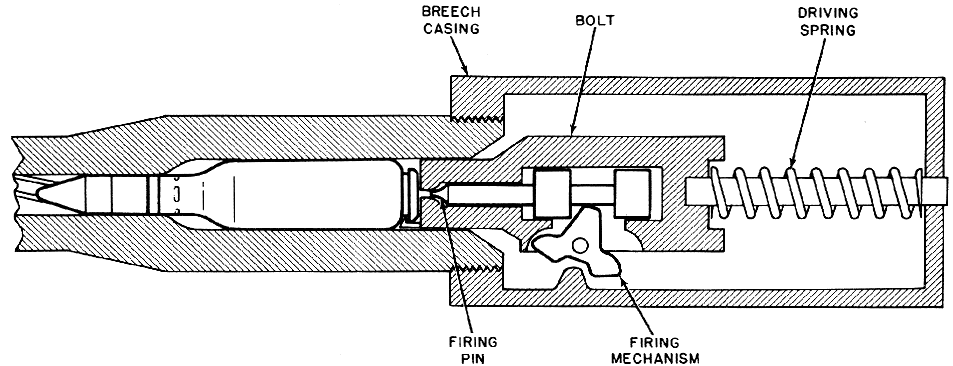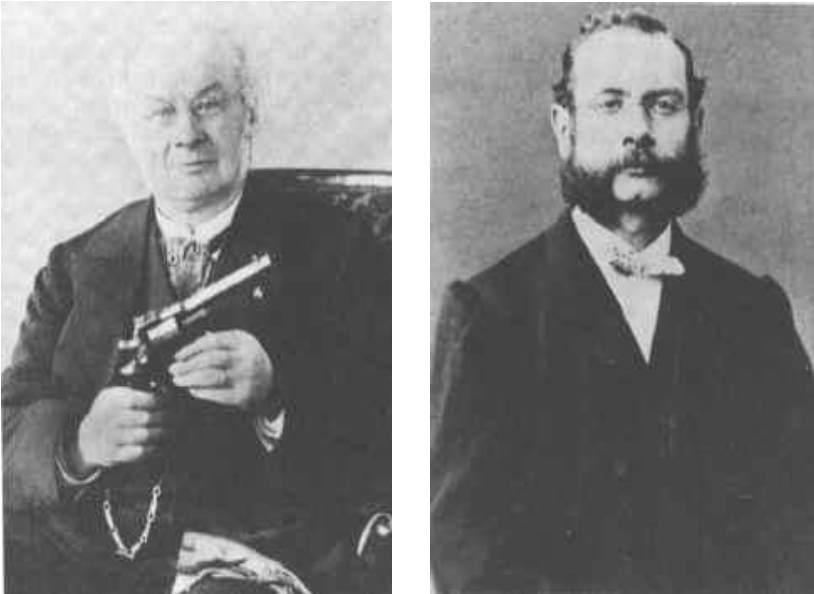Isaac Abadie’s gate-loading system was a significant improvement in revolver technology in the 19th century, and Portugal was one of the first to adopt it. The initial Portuguese model was adopted in 1878 specifically for officers, and this was expanded in 1886 to a longer-barreled version for cavalry (the extra barrel gave about 10% more muzzle velocity). The detail of Abadie’s patent that was innovative was a mechanism which disconnected the hammer when the loading gate was opened. Thus, one could open the gate and then pull the trigger to cycle the cylinder one position at a time. This greatly sped up the process of loading and unloading the gun, since it was not necessary to exactly align the cylinder each time by hand. This would remain the faster-loading system for solid-frame revolvers until the development of swing-out cylinders.
In total, it appears that about 12,000 Abadie revolvers were made for Portugal between the two models. They remain very scarce here in the US, and I’d like to thank Mike Carrick of Arms Heritage Magazine for providing me access to this one!
For more detail on the Portuguese use of these revolvers, I suggest checking out the C&Rsenal episode filmed on the topic:




It sort of reminds me of the Nagant M1895 revolver. Which is a nifty handgun with some cool features…but fast reloading is NOT one of them.
Wonder if open loading gate diconnects the hammer at single action mode…
It looks to me as when the Hammer strut is deactivated, it will not engage the Trigger and gun cannot be fired. Look at the other video Ian provided at about 15min and on.
Rotated back loading gate pushes the double action sear of hammer out of engagement with trigger and the gun can not be fired in double action mode but, single action sear and hammer seem as workable… the gun looks capable to fire with the rotated back loading gate… Or do l missed something…
Ian please instruct your colleague on the correct pronunciation of Mr Soleils name.
Ian, I have been handling a close cousin to the Abadie, made by Max Fliegenschmidt, a Liege Belgium gunmaker from 1888 to 1908. Very similar in appearance and function with the exception of a thumb safety on the left side. I don’t know if the cylinder functions the same for loading/unloading as it is a museum gun and some springs have been removed to “deactivate” it. If I can find the springs I will put it back together and try it.
I assume that the company which made this piece was “Soleil & Fils” which would be “Soleil & Son(s)”, “fils” being pronounced “feese” with a sharp “s”. If M. Soleil was working with his daughter or daughters the word is “fille” or “filles”, in either case pronounced “fee”.
I notice that some designs require no (external) tools and have captive pins etc – all of which strike me as eminently’good ideas’. While others including many famous and widely uses guns seem to have gone out of their way not to-much the reverse. ‘why’ – is it just choice or elegance of design, or was there a cost in manufacture (as well as in use)?
I notice that some designs require no (external) tools and have captive pins etc – all of which strike me as eminently’good ideas’.
Speaking as an ex-soldier, I TOTALLY agree with you. You know, just know, that in the field you will either lose the take down tool or loose pin or both!